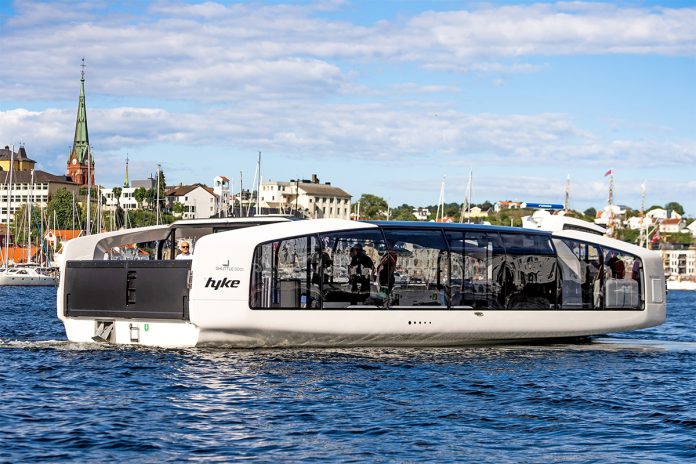Urban mobility is evolving, and Hyke is leading the charge with its innovative, all-electric ferries designed to provide a cleaner, smarter, and more sustainable alternative to traditional waterway transportation. As cities around the world grapple with the challenges of pollution, congestion, and aging infrastructure, Hyke’s zero-emission ferries offer a compelling solution.
Zero-emission transportation
The Hyke ferry system represents a significant step towards achieving zero-emission transportation on our waterways. Traditional ferries, often noisy and polluting, contribute to environmental degradation and urban noise pollution. In contrast, Hyke ferries boast an all-electric drivetrain coupled with a highly efficient hull and thermal system. This combination ensures energy-efficient operation while maintaining a commitment to environmental sustainability.
Hyke ferries are powered in two innovative ways: via built-in rooftop solar panels and automatic wireless charging when docked. This dual power source not only reduces reliance on fossil fuels but also minimizes the need for frequent grid connection upgrades. Furthermore, an optional backup battery can be integrated into the jetties, providing an additional layer of energy security and reducing operational disruptions.
Smart technology for smart cities
Hyke ferries are more than just a green alternative to traditional water transport; they are smart vessels designed for the cities of the future. Each ferry is integrated with proprietary smart vessel control technology, which enhances operational efficiency and safety. This technology includes features such as auto-docking, supported by sensor packs that monitor the ferry’s surroundings to ensure precise and safe docking maneuvers.

The intelligent design of Hyke ferries allows operators to optimize vessel deployment, reduce staffing requirements, and enhance overall fleet management. This is particularly beneficial for urban areas looking to expand their water-based transport networks without incurring prohibitive costs. The ferries are also compatible with existing infrastructure due to their standardized design, making them an attractive option for cities aiming to upgrade their transport systems with minimal disruption.
A comfortable and accessible ride
Hyke ferries are designed to provide a comfortable and enjoyable travel experience. The interior of each vessel is spacious and air-conditioned, offering a quiet, emission-free ride that stands in stark contrast to the noisy, exhaust-filled journeys typical of traditional ferries. The sleek and simple exterior design, crafted by an award-winning boat design team, complements the high-tech interior, creating a modern and aesthetically pleasing ferry.
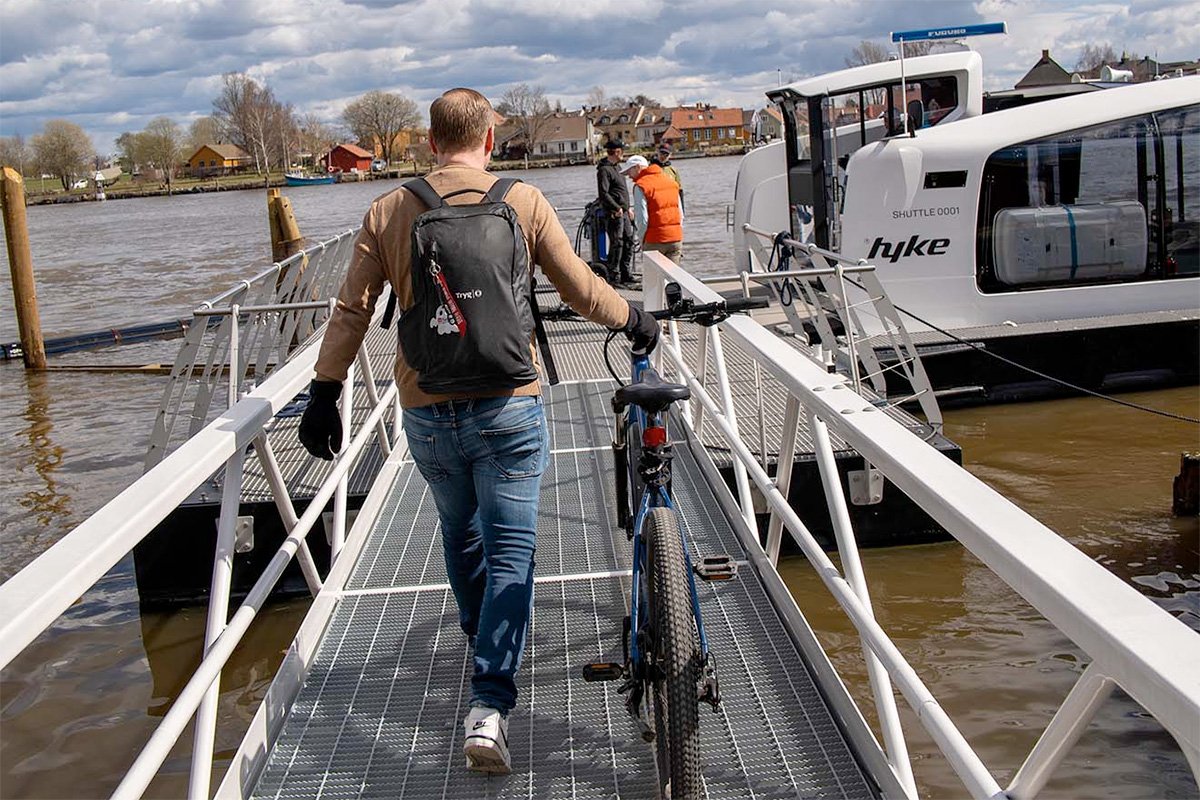
Accessibility is a key consideration in the design of Hyke ferries. The gangways are designed to be barrier-free, allowing easy boarding and disembarking for everyone, including those with limited mobility or who are using bicycles or strollers. This emphasis on inclusivity makes Hyke ferries a practical choice for diverse urban populations, ensuring that waterborne transportation is accessible to all.
Technical specifications
Hyke ferries are compact yet capable vessels, designed for efficient operation in urban waterways. Each ferry measures less than 15 meters in length, with a draft of 0.5 meters and a beam of 5.7 meters. They have a maximum speed of 15 knots (approximately 28 kilometers per hour) and can carry up to 50 passengers or 5.5 tons of cargo. The ferries are powered by an electric propulsion system with a power range of 60 to 150 kW, and their energy consumption is optimized at 10 to 12 kWh per hour when cruising at 6 knots.
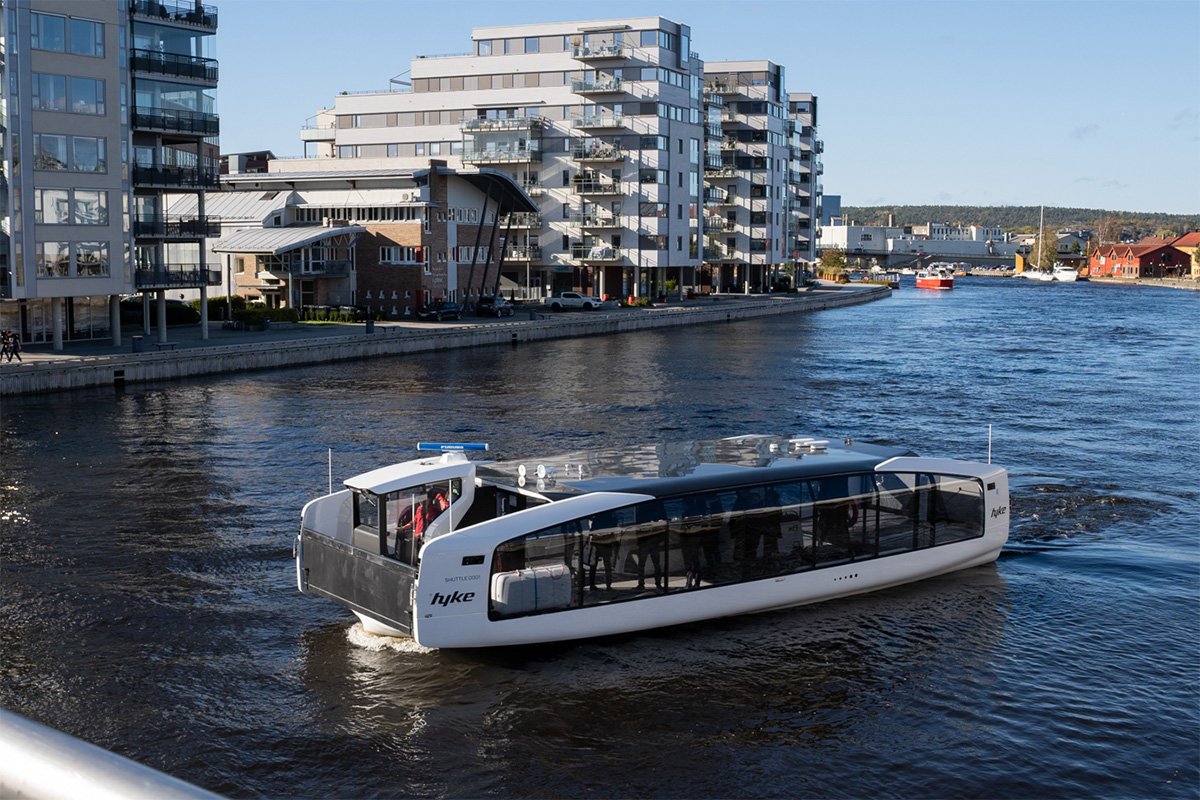
The ferries’ batteries have a gross capacity ranging from 95 to 285 kWh, supported by integrated solar panels capable of generating up to 7 kW at peak output. This configuration ensures a sustainable, low-cost energy supply, further reducing the environmental impact of ferry operations. Additionally, the ferries are equipped with a thermal system featuring air conditioning with heat recycling, enhancing passenger comfort while maintaining energy efficiency.
Autonomous-ready and scalable
Hyke ferries are built with future-proofing in mind. Each vessel is equipped with autonomous-ready technology, allowing for the gradual integration of autonomous operations. This capability not only enhances safety and efficiency but also reduces operational costs by potentially decreasing the need for onboard personnel over time. As cities expand their use of waterborne transportation, the scalability of Hyke ferries, combined with their autonomous capabilities, provides a viable path for sustainable urban growth.
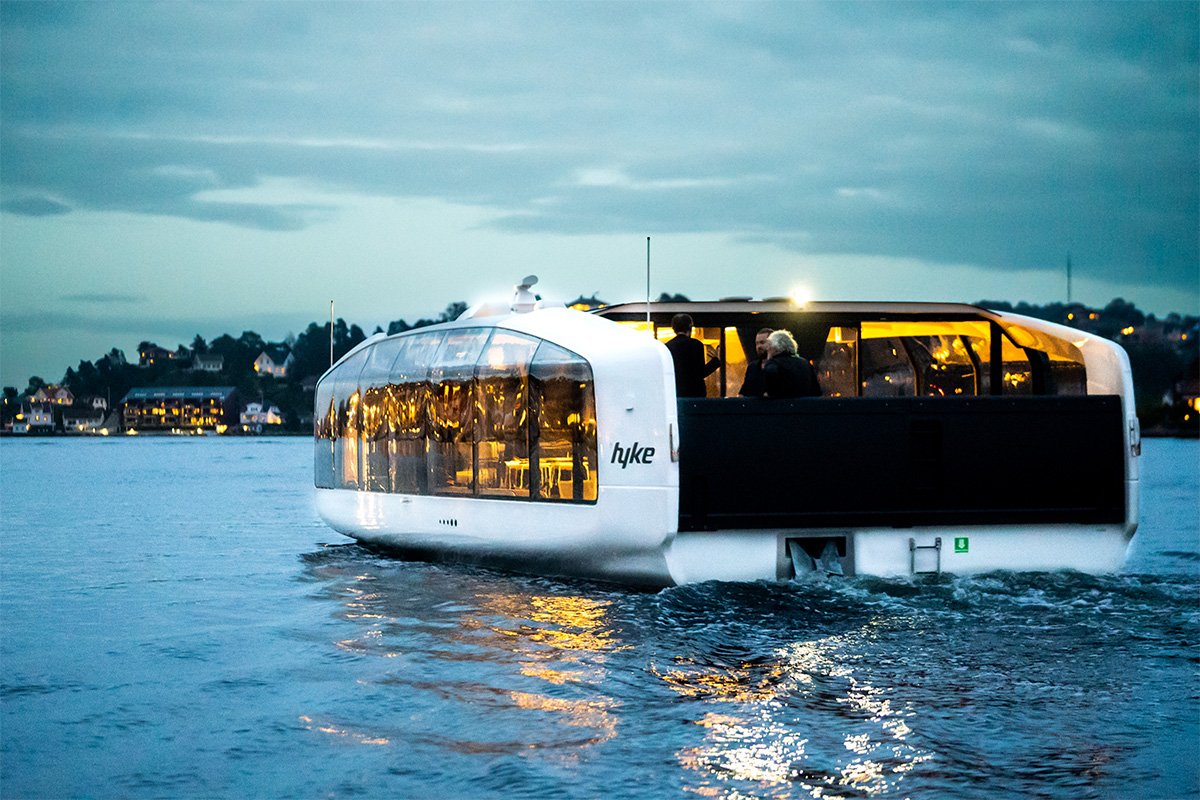
The intelligent docking system further enhances the ferries’ operational efficiency. Featuring auto-centering and auto-mooring technology, the docking system ensures a stable and safe connection between the ferry and the dock, even in adverse weather conditions. Once docked, the ferries automatically begin wireless charging, extending their runtime without the need for larger, heavier batteries. This innovative docking solution is compatible with standard jetty modules, making it easy to deploy or relocate as needed, further reducing infrastructure costs.
Case study: Pilot project with Fredrikstad Municipality
A notable example of Hyke’s impact can be seen in its pilot project with the Municipality of Fredrikstad in Norway. This project involves testing an old ferry route between Bekkhus and Vaterland using the Hyke Shuttle 0001. The initiative demonstrates how electric, waterborne public transportation can address urban mobility challenges, offering a cleaner, more accessible, and sustainable solution for city transport.
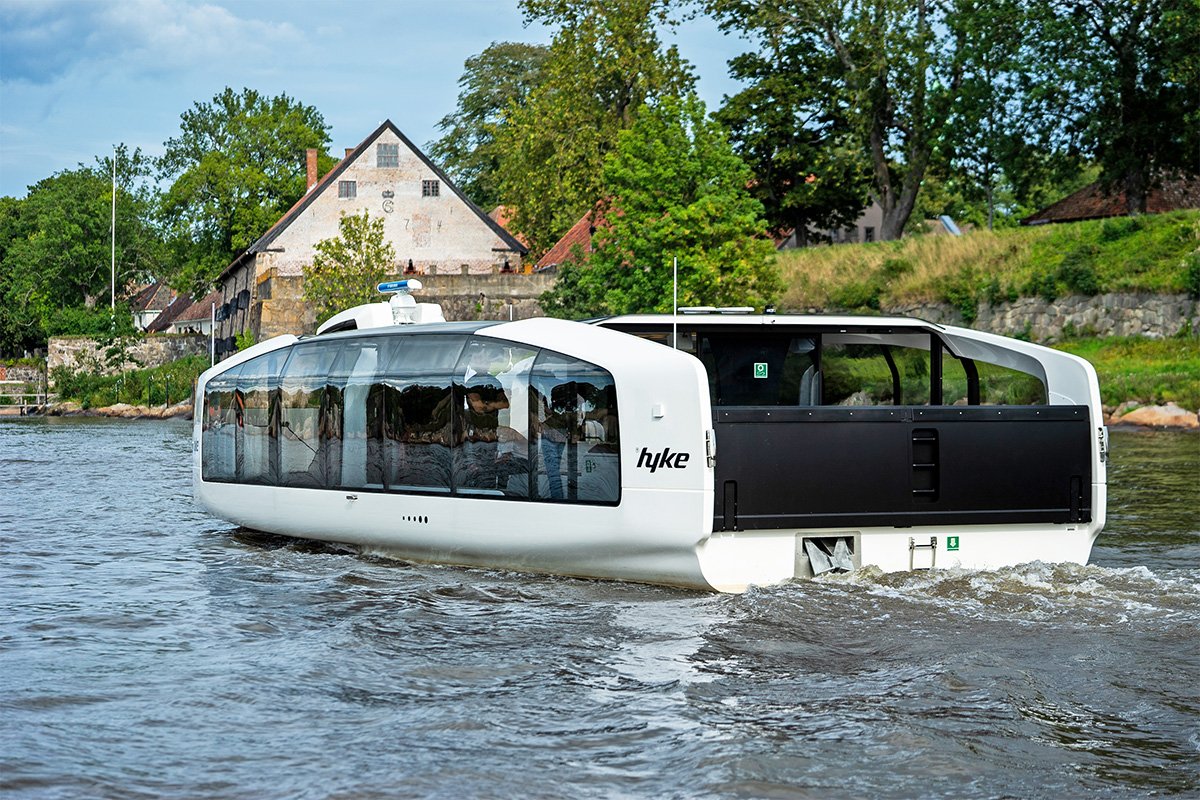
By situating Hyke Shuttle production in Fredrikstad, the project not only supports local employment but also bolsters regional businesses, creating economic and environmental benefits. The success of this pilot could serve as a blueprint for other cities looking to leverage their waterways for efficient public transport.
Source: Hyke

